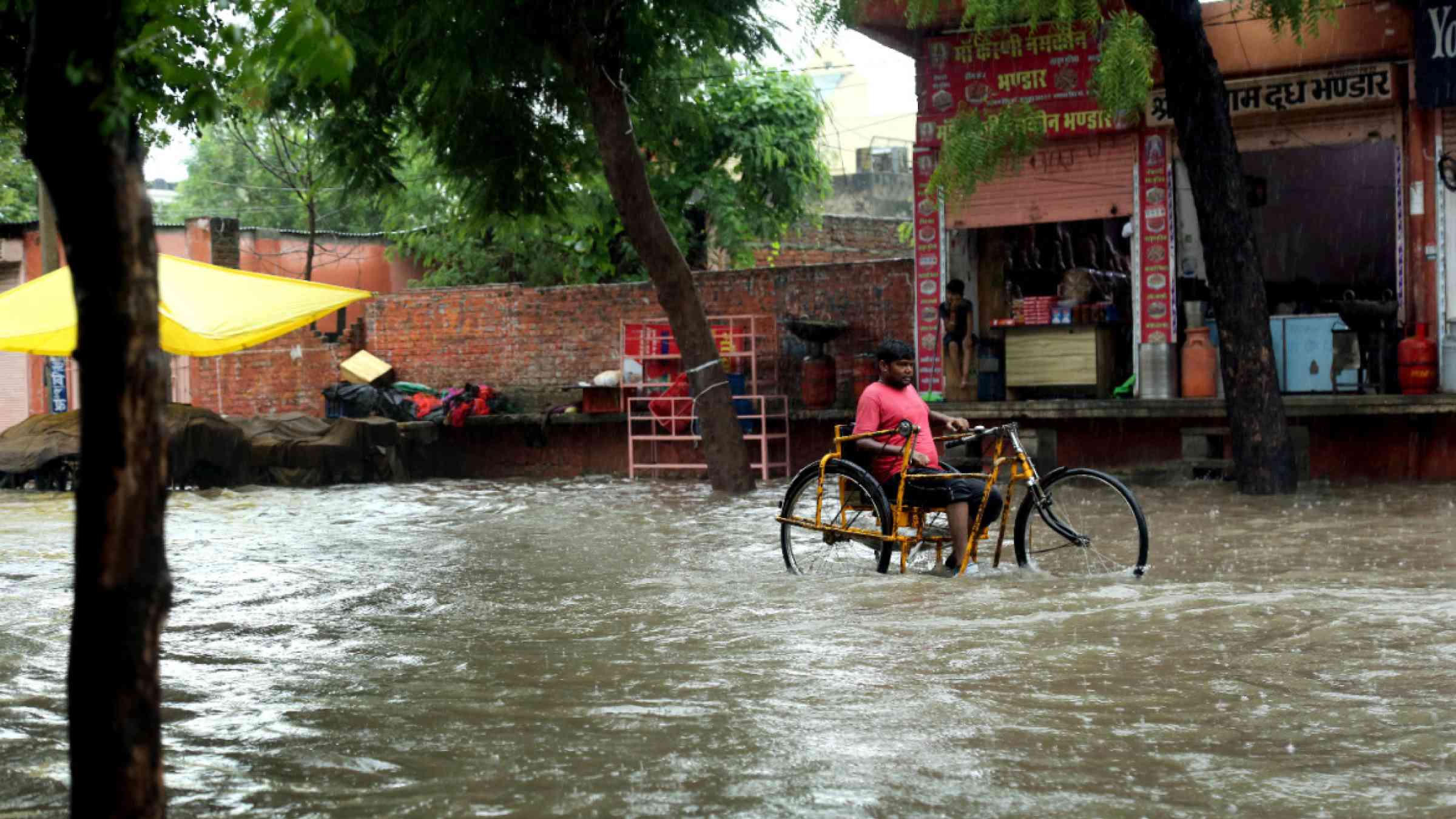
- Floods and droughts are on the rise in India. But they need not become disasters. It depends on how society manages them.
- The World Bank has put forward the EPIC Response framework to better manage these climate extremes. It emphasizes that floods and droughts be addressed as different ends of the same spectrum, and the whole of society be involved in the response – including the government, private sector, local government, academia, and civil society.
- The Framework is now being piloted in India’s flood-prone state of Assam, along with a new tool that enables various agencies to assess the status of their flood and drought protection programs, identify where collaboration can be enhanced, and track progress over time.
Floods and droughts have long been a part of life in India. Almost 150 years ago, the Ganga canal system was developed to bring water to farmers in the fertile upper Gangetic Plain. In southern India too, the early 20th century Krishna Raja Sagar Dam and other systems helped manage floods and prevent crop failures.
Today, however, the challenges are of a different magnitude altogether. The monsoon has become more erratic and unpredictable, bringing extreme rainfall on the one hand and sudden drought on the other. Worryingly, India's drought-prone area has increased by 57 percent since 19971, while instances of heavy rainfall have risen by almost 85 percent since 2012. This can have far-reaching impacts, affecting several generations.
To mitigate the impacts of floods and droughts, India has launched many policies and programs to improve water security and build climate resilience – several with World Bank support. This includes advances in technologies such as flood forecasting models, hydromet services and early warning systems, greater dam safety, and a national plan for disaster management. Even so, these measures, although laudable, will not be enough to address the scale of India’s water woes.
Importantly, floods and droughts don’t need to become disasters. It depends on how society manages these climatic extremes. While national governments tend to deal with them in a siloed manner, what is needed is a paradigm shift in the way these events are managed altogether. It is a complex problem that requires a multi-sectorial approach to reduce the risks and impacts.
Given the urgency of staying ahead of the changing climate, the World Bank, with support from Deltares, a Netherlands-based research institute, has put forward a new perspective to better manage these risks – the EPIC Response framework (Enable, Plan, Invest, Control).
The framework is being piloted by the World Bank supported Assam Integrated River Basin Management Program. The program seeks to reduce the vulnerability of Assam’s people to climate-related disasters and help the state develop its substantial water resources in an integrated and sustainable manner.
Speaking of the program, Mr. Bhaskar Das, Chief Technical Officer, Flood and River Erosion Management Agency of Assam (FREMAA) pointed out: “The Water Resources Department and the State Disaster Management authorities are working in close coordination and in an integrated manner.”
To demonstrate the applicability of the EPIC Response framework in other Indian states, a workshop, co-organized by the Indian Water Partnership and the World Bank, was held in New Delhi in April 2023. Various central government agencies, leading experts and a mix of states that face recurrent floods and droughts participated.
While these states - Assam, Bihar, Karnataka, Kerala and Odisha - face many common challenges, they have different climatic, economic, and social conditions. In Karnataka, for instance, around 20,000 water bodies have dried up and, in many districts, groundwater is depleting by the day. In Assam, on the other hand, where the mighty Brahmaputra flows, floods, riverbank erosion, and encroachment of riverine areas are the major challenges. In Bihar, too, where many rivers flow down from the mountains of Nepal carrying large sediment loads, more than 70 percent of the land is flood prone. What’s more, 28 out of Bihar’s 38 districts are affected by either floods or droughts, and sometimes by both every year.
The workshop underscored three key messages:
- Addressing floods and droughts as different ends of the same spectrum.
- Collaboration between various water agencies and presenting a joint government response to the challenge.
- Involving the whole of society in the response - private sector, local government, academia, and civil society.
Delivering his keynote address, Mr. Kushvinder Vohra, Chairman, Central Water Commission, stated: “Floods and droughts are one of the most pressing issues of our time.” Therefore, he stressed, it is essential to develop climate-resilient structural and non-structural solutions for effective water governance.
The newly developed EPIC Response Assessment Methodology (ERAM) tool that is being piloted in Assam was also presented at the workshop. The tool is a decision support system that enables various agencies to assess the status of their hydro-climatic risk management systems, identify areas where program components can be strengthened, ascertain where collaboration can be enhanced, and track progress over time. The results can facilitate a policy dialogue to generate a common understanding of their programs’ status, as well as the challenges and opportunities for enhancing flood and drought risk management systems.
Commenting on the relevance of the EPIC framework in the Indian context, Mr. A.B. Pandya, Secretary General, International Commission on Irrigation & Drainage, said: “The EPIC framework serves as a good guideline and benchmark against which the readiness of the individual region or subregion can be assessed.”
Outlining the complex situation in Bihar, Mr. Pravin Kumar from the Bihar State Disaster Management Authority (BSDMA) spoke about their mandate to develop disaster management policy, lay down guidelines, approve plans across departments, coordinate implementation of plans, recommend funds for mitigation measures and review measures taken. He said that the EPIC Response Framework and the ERAM tool will be useful to assess these measures.